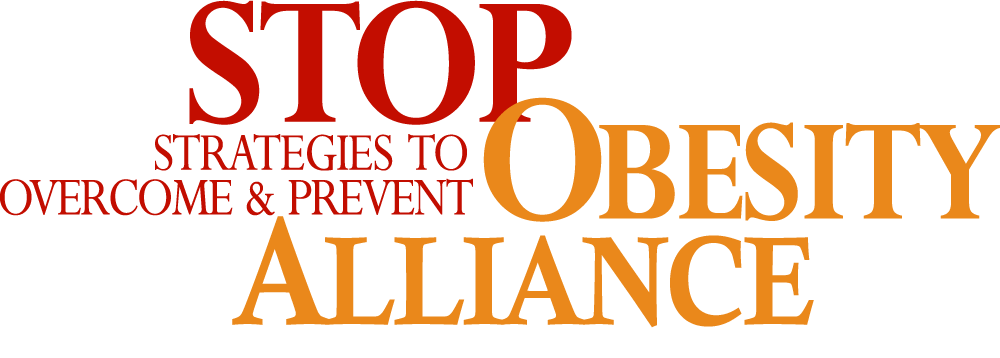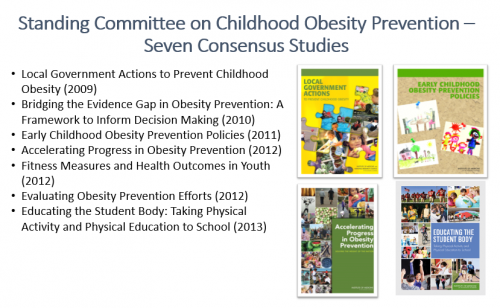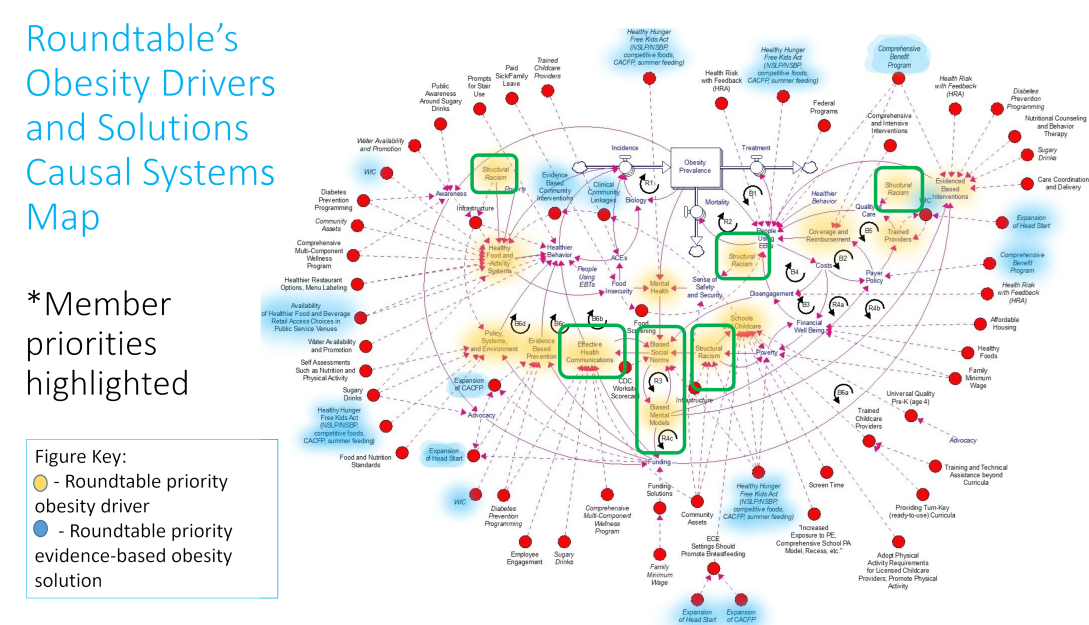The Roundtable on Obesity Solutions, established by the Institute of Medicine (IOM, now the Health and Medicine Division of the National Academies of Sciences, Engineering, and Medicine) in 2014, followed 8 years of the IOM’s engagement with obesity. In 2005, the IOM conducted the first consensus study of obesity, entitled “Preventing Childhood Obesity: Health in the Balance”, which was funded by the Robert Wood Johnson Foundation (RWJF). That study called for making obesity a national health priority with coordinated leadership and funded state programs. Specific recommendations focused on nutrition labeling, guidelines for food marketing and meal standards, and a minimum of 30 minutes per day of physical activity in schools. “Preventing Childhood Obesity” was followed two years later by a second consensus study, also funded by the RWJF, entitled “Progress in Preventing Childhood Obesity: How Do We Measure Up?.” This report provided a number of questions to guide the evaluation of obesity prevention efforts, and made additional recommendations for childhood obesity prevention including expanded efforts to identify, implement, and evaluate interventions in multiple settings.
The urgent need to address childhood obesity subsequently led the RWJF to fund a Standing Committee on Childhood Obesity at the IOM. The Standing Committee consisted of 26 members, several of whom were members of the two consensus study committees, and 10 of whom went on to become members of the Roundtable on Obesity Solutions (RT). This membership core provided a much needed historical continuity of interest to the ongoing evolution of the IOM/National Academies’ commitment to obesity. The standing Committee worked from 2007-2013, and was responsible for 8 workshops and 7 consensus studies. Consensus studies are particularly relevant, insofar as they represent the only mechanism by which the National Academies issues recommendations. Consensus studies are externally funded; members of consensus study committees are experts in their field, and are appointed by the National Academies. Consensus committees often host public workshops to invite suggestions and to broaden their understanding of the focus of the consensus study. Consensus studies that emerged from the Standing Committee on Childhood Obesity are shown in Figure 1.
Figure 1
In 2010, HBO approached the IOM to partner on a four-part documentary about obesity, entitled The Weight of the Nation. The documentary was the first popular product to address childhood obesity, and consisted of four parts. The IOM’s role was to convene representatives from CDC and NIH to assure that the film accurately reflected the science of childhood obesity. The documentary was nominated for 2 Emmy awards, and generated almost 20 million unique impressions on Facebook. One purpose of the film was to catalyze local action on childhood obesity. As of August 2012, over 40,000 commitments were made to take action.
When the Standing Committee on Childhood Obesity ended in 2013, IOM leadership thought that work at the IOM on obesity should continue, and in 2014 decided to establish the Roundtable on Obesity Solutions. Membership of the Roundtable was very diverse: 36% of members were from non-profits, 27% were from businesses, 18% were academicians, and 16% were from philanthropies. Financial support for the Roundtable’s activities comes from its members. The stated purposes of the Roundtable were to:
- Engage leadership from public health, health care, industry, government, philanthropy, nonprofits, the financial sector, and academia
- Foster ongoing dialogue about critical and emerging policy and research issues to accelerate and sustain progress in obesity prevention and care
- Move the field of obesity from what needs to be done to how to accomplish those changes.
Overarching considerations included the need to view obesity from a systems perspective, achieve health equity through focused action and research, develop and use effective communication strategies, identify innovative financing mechanisms, and identify programs that work. Priority areas included:
- Communities (e.g., linking innovative communities, promoting physical activity in children)
- Food (e.g., food marketing, food insecurity, food systems)
- Clinical education and practice (e.g., strengthen interprofessional education, restructure clinical delivery systems)
- Clinical-community partnerships
- Identify and disseminate innovative practices
Although these purposes and considerations were drafted eight years ago, they continue as priorities today.
In contrast to consensus studies, roundtables and forums at the National Academies cannot make formal recommendations. However, within the Roundtable there are 5 satellite groups known as Innovation Collaboratives (ICs). These consist of Early Care and Education, Physical Activity and Health, Business Engagement in Obesity Solutions, Lived Experience, and Integrated Clinical and Social Systems for the Prevention and Management of Obesity. In addition to RT members, the ICs are also populated by representatives of groups that are not RT members, thereby increasing the reach and engagement of the Roundtable. The ICs have become the organizational entities within the RT that enable innovation and collaboration around policy initiatives. Activities of the RT and of the ICs have led to over 25 Perspectives published by the National Academy of Medicine, as well as a number of other publications in the scientific literature. The RT also conducts up to 3 workshops per year addressing a diverse series of topics, decided by the membership. These workshops and their resultant publications have been among the most popular products of the National Academies’ workshops and publications. An important effort to address stigma and bias is reflected by the emphasis of workshop planning committees’ counseling of speakers and panelists on the use of people-first language in their presentations. A full listing of the RT workshops and publications can be found on the RT website.
In 2020, the Roundtable initiated a strategic planning process using a group model building exercise. This process included the development of a systems map to help identify the drivers of obesity (Figure 2). Using the Meadows framework for priority setting, the Roundtable settled on three major priorities: structural racism, biased mental models and social norms, and effective health communication.
Figure 2
In synchrony with the Roundtable’s strategic planning, the RT has held a series of workshops to inform and broaden the RT’s priority setting process. The 2020 Workshop Series included, “Using systems applications to inform obesity solutions" and “Integrating systems and sectors toward obesity solutions.” The 2021 Workshop Series included, “Systems and obesity: advances and innovations for equitable health and well-being,” “Leveraging health communication, data, and innovative approaches for sustainable systems-wide change to reduce the prevalence of obesity,” and “Exploring strategies for sustainable systems-wide changes to reduce the prevalence of obesity.” The Roundtable is now in the process of aligning the activities of the ICs with these priorities.
The engagement of the IOM and National Academies with obesity for almost two decades has provided continuous efforts to grow the science base of obesity prevention and management, extending from the individual to the federal and global level. The Roundtable at the National Academies is a unique institution that provides an ongoing locus for sharing novel ideas and multi-sectoral progress in the prevention and management of obesity. Implementation of efforts to address the RT’s priorities of structural racism, effective health communication, and biased mental models and social norms represent new areas of concentration that broaden the interests and activities of the RT, and are likely to lead to novel insights and innovative solutions, consistent with the name and goals of the Roundtable on Obesity Solutions.




